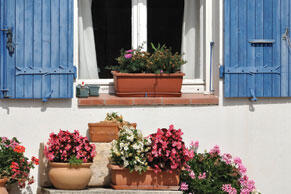Maximise the benefit of a main residence election
Where multiple properties are used as a home, claiming the correct amount of private residence relief on a sale can be fiddly. Things can be made easier by making a private residence election. How can owners maximise the benefit?

Multiple homes
If a person has more than one property which they occupy as a home at least some of the time, it’s worth considering an election to nominate which counts as their principal private residence (PPR), i.e. their main home, for CGT purposes. In the absence of an election the PPR is determined by where they spend the most time according to the available evidence, but a private residence election to choose their PPR can be made as long as they can demonstrate they use the property as a home.
What is a “residence”?
Remember that mere occupancy is not usually enough to meet HMRC’s criteria for status as a residence. The occupancy must have sufficient quality to constitute a home. A holiday apartment would probably therefore not count, but a residence in the country used at weekends away from a city address probably would.
Time limits and variations
Having established that there are two or more residences (homes), a PPR election can be made. It’s always advisable to make an election to establish one property as a PPR to secure the final nine-month deemed occupancy and to open the possibility of claiming letting relief, if the circumstances are right, in addition to the main private residence relief. Elections must be made within two years of a change in the “combination of residences”, otherwise the opportunity passes.
Once made, a private residence election can be varied at any time by giving notice in writing. It can be backdated for up to two years. For obvious reasons it’s advisable to have the election in favour of the property expected to yield the largest gain, and to vary this to the other property for a short period only, perhaps just before a sale.
Reopening the window
If the two-year window for making an election has passed all is not lost as a new one opens every time there’s a change in the combination of residences. For example, when a further residence is purchased.
A less costly way to reopen an election would be to rent out one of the properties for a short period and then to reoccupy it as a residence. Because the property can’t be used as the owner’s residence while it’s let, the re-occupation counts as a change in combination of residences.
Related Topics
-
Corporation tax due
-
Planning ahead for pension salary sacrifice changes
From 6 April 2029, both employers and employees will be required to pay Class 1 NI on pension contributions in excess of £2,000 made through a salary sacrifice arrangement. What can you do about it?
-
Marginal relief - responding to an HMRC nudge letter
HMRC is running a campaign to clamp down on incorrect claims for corporation tax marginal relief (MR). In what circumstances might you be challenged by HMRC and how should you respond?
